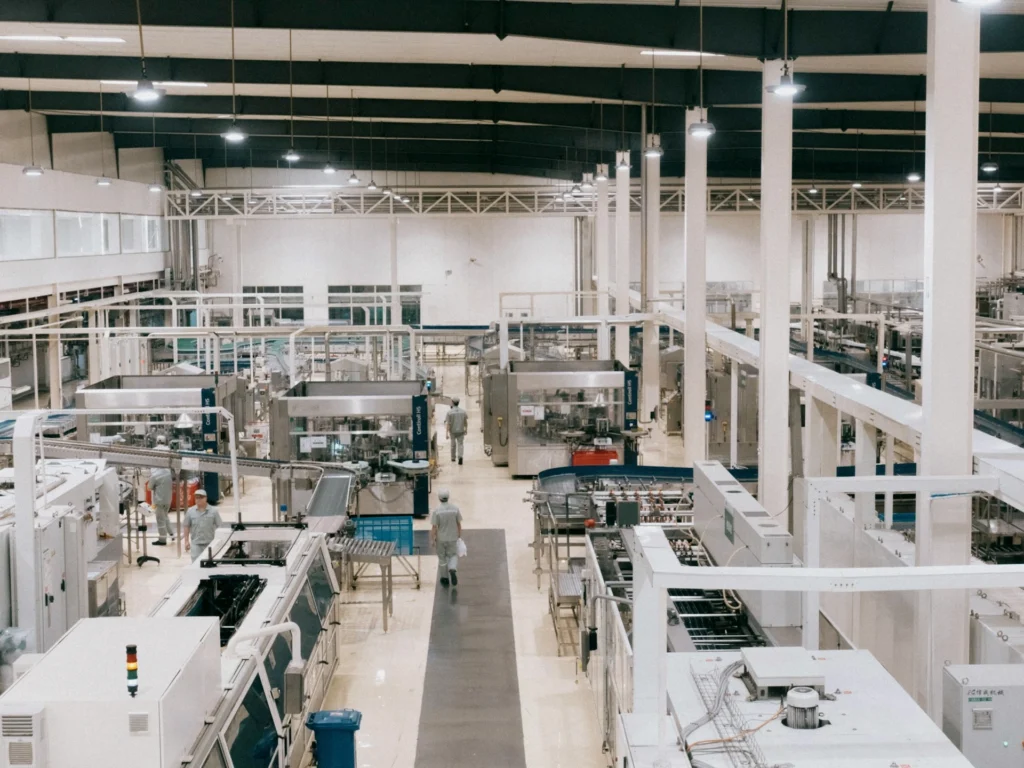In a nutshell:
- Automated machine learning pipelines revolutionize predictive modeling by automating various stages of the model development process.
- They accelerate time-to-value, improve model performance, and simplify tasks like data preprocessing, feature engineering, model selection, and hyperparameter tuning.
- Understanding the stages of these pipelines is crucial for maximizing their potential.
- Implementing automated pipelines requires considerations like organizational readiness, technological training, and infrastructure upgrades.
- Embracing automation in predictive modeling can lead to significant business success and a competitive edge in the data-driven world.
For data professionals, building an effective machine learning model can be arduous and time-consuming. From cleaning and preparing data to selecting the right algorithms and tuning hyperparameters to engineering optimal features, each step requires deep expertise and careful experimentation. Even small tweaks can dramatically impact model performance.
Enter automated machine learning pipelines. These systems take the heavy lifting out of the model-building process by automating many of the tedious and labor-intensive tasks. You can circumvent manual trial-and-error and quickly zero in on high-performing models that meet your criteria.
At their core, these automated pipelines leverage sophisticated techniques to efficiently explore the vast space of possible pipelines and model configurations. The systems can automatically tune algorithms, engineer new features, and uncover outstanding model architectures — all while optimizing for your specified metrics.
While automated machine learning pipelines may sound like a magic bullet, these cutting-edge solutions incorporate complex methods under the hood. In this post, we'll dive into how the latest automated pipelines work, separating fact from fiction. We'll explore their immense potential for accelerating model building, while keeping an objective perspective on their current limitations.
Stages of Automated Machine Learning Pipelines
Understanding the various stages of automated machine learning pipelines unlocks their full potential. Each stage uniquely streamlines the predictive modeling process and optimizes the resulting model's performance. Let's delve into the core stages of these pipelines.
Data Preprocessing Automation
In the data preprocessing stage, you deal with all the preliminary aspects related to your data. The main goal here is to make your data suitable for the downstream stages of the machine-learning pipeline. When automated, these tasks can be done more efficiently and reliably.
- Data Cleaning: Clean data is the foundation of any successful machine learning project. Data cleaning for machine learning involves meticulously preparing your data by addressing errors, inconsistencies, and duplicates within your dataset. This ensures your models are trained on high-quality information, ultimately leading to more reliable predictions.
- Transformation: The transformation step allows the data to be structured appropriately to suit the subsequent stages of the pipeline. This could involve tasks such as scaling the data, encoding categorical variables, normalizing numerical data, or other operations that make the data more suitable for machine learning models.
- Automated Feature Extraction – Feature extraction involves identifying and extracting the most relevant information from raw data. This makes the data more manageable and less computationally intensive without losing key information necessary for predictive modeling, a time-consuming process made easy through automation.
Automated Feature Engineering
Automated feature engineering involves automating the transformation and extraction of features from raw data, enabling the model to understand the data better. The process is tailored to match the specificity and complexity of each dataset, aiming to capture as much relevant information as possible. It assists in revealing hidden patterns and correlations in the data that might otherwise be missed.
A machine learning model can make more accurate predictions through automated feature engineering, rendering the entire pipeline more productive and value-adding. It also eliminates the time-consuming and complex task of manually creating and selecting features, freeing up the data scientist's time for more strategic tasks.
- Feature Selection: This stage involves choosing the most useful attributes or 'features' from the data to input into the predictive model. Automated feature selection methods help to pinpoint the most relevant features, reducing the burden of dimensionality.
- Transformation: Like in data preprocessing, the features selected in the first stage may undergo transformation to improve their predictive potential. Automation aids this, transforming the features as needed to best process and work with the data.
- Handling Missing Data: Gaps in your dataset can significantly impact your model's performance. Automated machine learning pipelines handle these effectively by imputing missing values or omitting problematic data entries, ensuring continuity and accuracy in your dataset.
Photo by Adrien on Unsplash
Model Selection Automation
The main objective of the model selection automation stage is identifying the most effective machine learning model or algorithm for a given predictive task. Since numerous machine learning models are available, each with its own strengths, weaknesses, and assumptions, it's particularly important to use automation.
Automated machine learning pipelines aid in efficiently and accurately selecting an appropriate model that will provide the best performance based on the specific characteristics of your dataset and the prediction task at hand.
This results in a more streamlined and reliable selection process, reducing the risk of human bias and the potential for over or underfitting. Let's walk through some of the key steps:
- Algorithm Selection: Choosing the right algorithm for your predictive modeling task can be daunting. Automated machine learning pipelines simplify this process by testing various algorithms and optimizing them based on predetermined success metrics.
- Algorithm Optimization: Model optimization means tuning the workings of the model to maximize its performance. Automated machine learning pipelines can fine-tune a model's specifications based on training data, determining the optimal structure and settings to best fit the data.
- Model Evaluation and Comparison: An automated pipeline can evaluate and compare multiple models using predefined criteria. This allows for effective benchmarking, speeding up the decision-making process, and saving resources.
Hyperparameter Tuning Automation
Hyperparameter tuning is a complex but necessary part of the process that requires knowledge, experience, and time. This is where automated machine learning pipelines come into play. They can evaluate numerous combinations of hyperparameters and scan through multiple possibilities, learning from each iteration and enhancing the model's precision.
Without intensive human effort, they help identify the perfect synergy of hyperparameters that will enable the model to function at its highest potential. The keys are:
- Automated Optimization of Model Parameters:—For any given algorithm, specific parameters or 'hyperparameters' can be adjusted to enhance the model's predictive performance. Automated machine learning pipelines can iteratively test and optimize these hyperparameters, greatly improving the efficiency and effectiveness of the model development process.
- Hyperparameter Tuning: Hyperparameter tuning is all about fine-tuning your model's performance. By automating this process, you can obtain high-quality predictive models much faster, contributing to a quicker return on investment for your modeling efforts.
The Benefits of Automated Machine Learning Pipelines
Automated machine learning pipelines offer numerous benefits that make them a compelling option for businesses looking to capitalize on the predictive power of their data. Here's a closer look at how these pipelines contribute to predictive modeling success.
Accelerating Time-to-Value
By automating multiple facets of the model development process, such pipelines drastically reduce the time it takes to go from raw data to insightful predictions. This speedy turnaround can provide businesses with a considerable competitive edge.
The sequential, interconnected nature of the pipeline means that tasks can flow smoothly from one stage to the next without requiring constant supervision or manual intervention. This reduces the risk of bottlenecks and helps keep the model development process efficient and streamlined.
After developing a model, you’ll need to integrate it into business systems quickly to generate and use its predictions. Automated machine learning pipelines simplify this process, enabling faster implementation and accelerating the time-to-value of these models.
Improving Model Performance
Automated pipelines also play a critical role in enhancing the performance of predictive models, leading to more accurate and valuable predictions. Through automated feature selection, model selection, and hyperparameter tuning, these pipelines help produce models that can handle complex patterns in data and deliver highly accurate predictions.
Overfitting and underfitting are common pitfalls in predictive modeling that many encounter. A well-calibrated model can strike the right balance between bias and variance, which is key to ensuring good predictive performance.
Automation aids in achieving this balance by systematically exploring a range of model complexities during the feature engineering and model selection stages. It helps identify an optimal model that neither overcomplicates the learning process (leading to overfitting) nor oversimplifies it (resulting in underfitting).
Benefits of an Intuitive Interface
Automated machine learning pipelines often have an intuitive interface that simplifies the modeling process. This interface allows users to easily monitor the progress of their automated tasks, helping to track the effectiveness of the machine-learning model in real time.
In addition, these interfaces often include visual aids like graphs and charts, helping users better understand the modeling process by breaking down complex data and patterns into simple, digestible visual representations.
The interface also allows users to adjust various parameters in the model easily, providing a more hands-on experience while maintaining automation's benefits.
Furthermore, the user-friendly nature of these interfaces helps to lower the barriers to entry for machine learning. This means that even those who are not data scientists or tech experts can potentially leverage the capabilities of these tools. The simplicity of the interfaces also allows for easier interpretation of results, leading to quicker, more informed business decisions.
High-level overview dashboards and real-time status updates can further enhance the user experience, providing essential insights at a glance and keeping stakeholders informed about the predictive models' process and progress.
Platforms like Pecan offer this kind of user-friendly interface for understanding model performance and making adjustments, making machine learning more accessible and less intimidating to non-specialist users. There are options suited for people of all skill levels, making Pecan an easy choice for any type of data analyst.
Considerations for Implementing Automated Machine Learning Pipelines
While automated machine learning pipelines hold immense potential, their successful implementation requires careful planning and consideration.
When preparing to implement an automated machine learning pipeline, consider the organizational readiness for change, the skill level of the team that will be working with the technology, and the potential need for system and tool upgrades.
Unless you can properly balance all of these factors, your business may not be able to successfully automate your machine-learning pipelines.
Changes to Organizational Culture
Implementing a new automated system may require shifting the organization's culture and processes. The change will likely affect various stakeholders—data scientists, management, IT teams, and potentially even the predictions' end users.
Therefore, good change management practices should not be neglected, including clear communication about the system's advantages, timelines for change, and what this will all mean for every party involved.
Technological Training
The aim of automated pipelines is naturally to make the machine learning process accessible to non-specialists, but there is still a need to understand the basics of predictive modeling and data analysis. Make sure your team has at least one person knowledgeable in these areas who can manage the pipeline and interpret its output.
It’s also a good idea to train others as a redundancy going forward since having only one person who can work with your ML technology at a high level could be a disaster if that person becomes incapacitated.
Upgrades and Infrastructure Checks
Implementing automated machine learning pipelines might necessitate an upgrade of your existing infrastructure. This could mean investing in more powerful servers or cloud services or ensuring the compatibility of the new system with your existing data management tools. This will mean that your pipeline complements rather than disrupts your existing processes, helping you realize your data's full potential.
That’s why a thorough review of the current system and a clear understanding of the technical prerequisites for the new pipeline are crucial preparation steps. Failing to do this means a lot of wasted money, time, and effort, as well as a delayed start to actually taking advantage of this technology.
Understanding and Mitigating Limitations
It’s also worth remembering the different shortcomings that could come from this process. These include the risk of over-reliance on automation as a cure-all or silver bullet and the need for a basic level of competent human oversight and understanding of the material.
While automated pipelines are designed to handle a wide variety of data, some exceptionally complicated or unique datasets may require more customized data preprocessing or feature engineering steps than an automated pipeline can provide, requiring human intervention to do properly.
Embrace Automation and Predictive Modeling for Business Success
Automated machine learning pipelines represent a significant leap forward for predictive modeling. By automating the time-consuming and complex stages of model development, these pipelines can accelerate time-to-value and improve model performance, helping businesses unlock invaluable insights from their data.
Whether you're a seasoned data professional or a business leader looking to leverage the power of machine learning, it's worth considering the potential benefits of implementing an automated machine learning pipeline. As technology marches on, with more advancements happening every day, those who can navigate and harness these technologies will undoubtedly gain a competitive edge. Don’t get left in the dust when you can easily step into the future today.
Try Pecan's automated predictive analytics platform today with a free trial, or get in touch for a personal tour.










